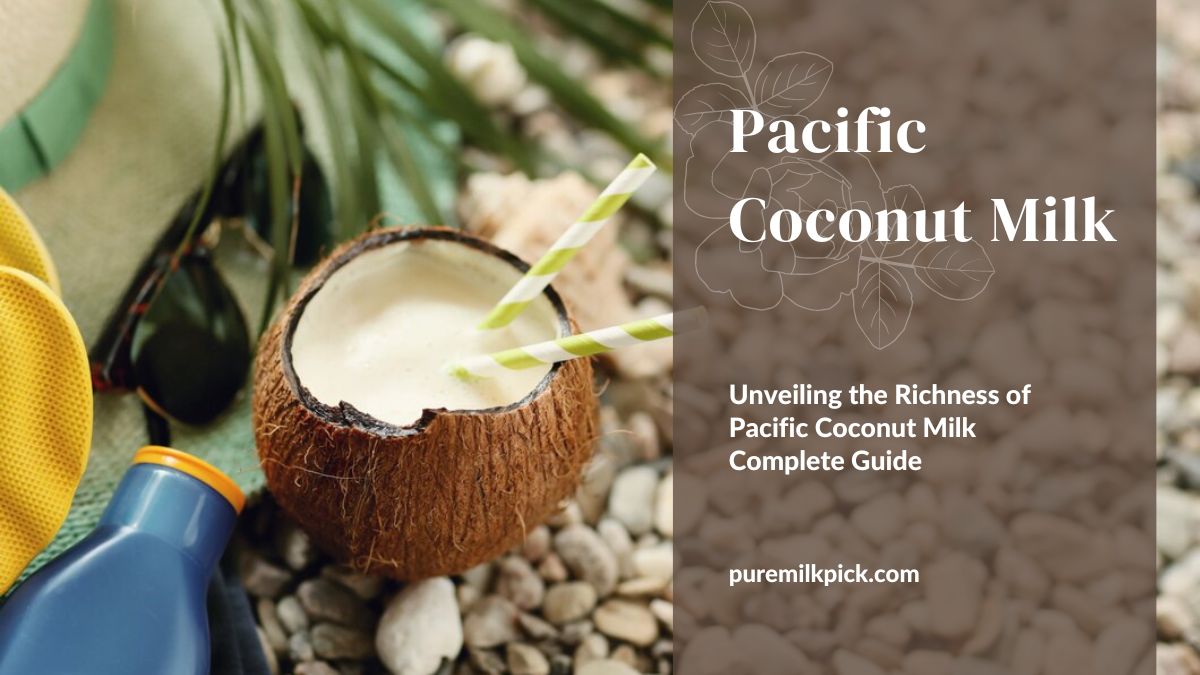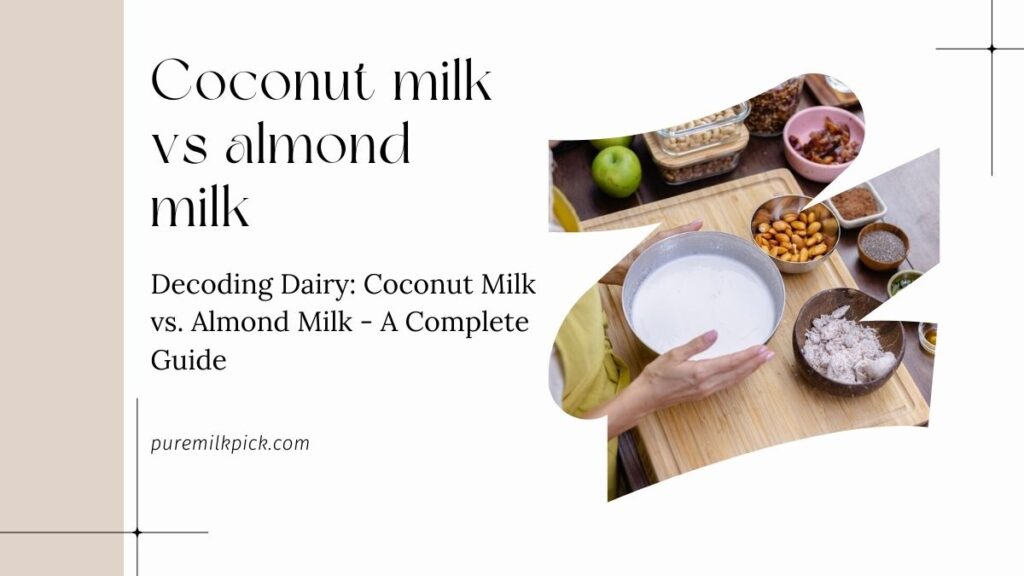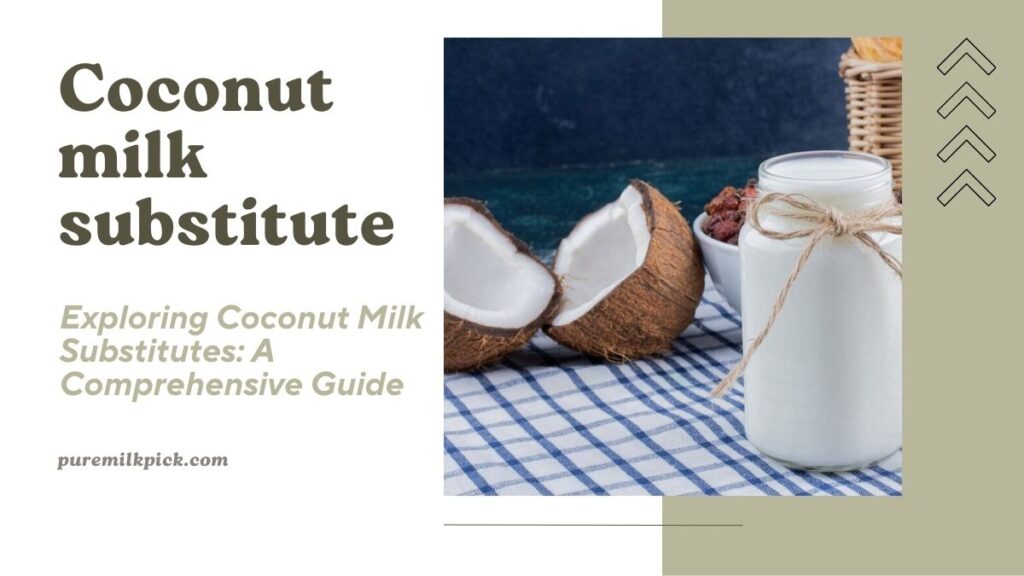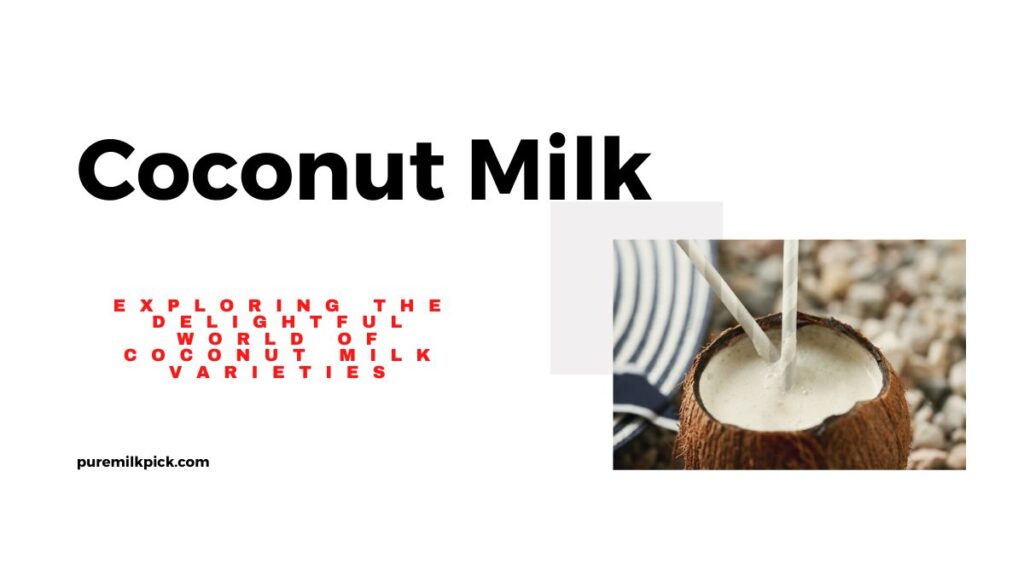Welcome to the exotic world of Pacific Coconut Milk, a culinary gem that adds richness and flavor to dishes, originating from the lush coconut plantations of the Pacific region. In this comprehensive guide, we will delve into the intricacies of Pacific Coconut Milk, exploring everything from its cultivation and extraction methods to its nutritional benefits and diverse culinary applications. Whether you’re a seasoned chef or an adventurous home cook, get ready to embark on a journey that unveils the secrets and versatility of this tropical delight.
The Pacific Coconut
Overview of Coconut Cultivation in the Pacific Region
In the heart of the Pacific, where azure waters meet sandy shores, coconut palms sway gracefully, producing the key ingredient for Pacific Coconut Milk. The region’s unique climate and soil conditions contribute to the distinct characteristics of Pacific coconuts, known for their sweetness and robust flavor. Pacific coconut farming is not just a trade; it’s a way of life, deeply rooted in tradition and sustainable practices.
Sustainability is at the core of coconut cultivation in the Pacific. Farmers embrace eco-friendly methods, avoiding harmful chemicals and promoting biodiversity. As a result, Pacific Coconut Milk not only captivates with its taste but also carries the essence of responsible and environmentally conscious agriculture.
Unique Characteristics of Pacific Coconuts
The Pacific coconut, scientifically known as Cocos nucifera, is celebrated for its exceptional sweetness and unique flavor profile. The region’s tropical climate, with ample sunshine and consistent rainfall, nurtures coconuts that are rich in essential oils, providing a distinctive taste that sets Pacific Coconut Milk apart. The creamy texture and natural sweetness make it a sought-after ingredient in both sweet and savory dishes.
In the Pacific, coconut palms are not merely crops; they are revered symbols of life and prosperity. The cultural significance of coconuts is deeply ingrained in daily rituals and traditional practices. Pacific Coconut Milk, sourced from these sacred palms, becomes a culinary representation of the region’s heritage and the vibrant stories etched in every coconut grove.
Read More: Unveiling the Marvels of Toasted Coconut Milk: Your Ultimate Guide
Sustainability Practices in Pacific Coconut Farming
In the pursuit of sustainable agriculture, Pacific coconut farmers embrace practices that prioritize both the environment and the community. Organic farming methods, minimal use of pesticides, and efficient water management contribute to the eco-friendly footprint of Pacific Coconut Milk. Moreover, farmers actively participate in fair trade initiatives, ensuring that the benefits of their labor reach every corner of the community.
Transitioning to sustainable packaging further amplifies the commitment to environmental responsibility. From coconut to carton, the journey of Pacific Coconut Milk reflects a harmonious balance between nature, tradition, and innovation.
The Art of Extracting Pacific Coconut Milk
Traditional Methods vs. Modern Extraction Techniques
Pacific Coconut Milk extraction is an art form passed down through generations. Traditionally, the process involved grating coconut flesh, soaking it in warm water, and then squeezing out the creamy liquid. While this method continues to be cherished for its authenticity, modern techniques have streamlined production, ensuring efficiency without compromising quality.
Modern extraction methods typically involve mechanical processes such as pressing or centrifugation. These methods not only save time but also help maintain the freshness and purity of Pacific Coconut Milk. The choice between traditional and modern methods often depends on the intended use of the coconut milk, with chefs and home cooks opting for the method that best suits their culinary masterpieces.
Quality Considerations in the Extraction Process
The quality of Pacific Coconut Milk is closely tied to the extraction process. Freshness is paramount; coconuts are harvested at the peak of ripeness to maximize flavor and nutritional content. The careful selection of coconuts, coupled with precise extraction methods, ensures that every drop of Pacific Coconut Milk retains its natural goodness.
Transparency in the production process is a hallmark of reputable Pacific Coconut Milk brands. They invest in state-of-the-art facilities and rigorous quality control measures to deliver a product that consistently meets the high standards set by both traditional wisdom and modern expectations.
Role of Freshness in Enhancing Flavor and Nutritional Content
The journey from coconut to milk is a swift one, emphasizing the importance of freshness. Pacific Coconut Milk, when consumed at its peak, offers a burst of tropical flavors and a rich, velvety texture. The freshness not only enhances the taste but also preserves the nutritional benefits, making it a wholesome addition to a variety of dishes.
The versatility of Pacific Coconut Milk lies not only in its taste but also in its ability to adapt to different culinary styles. Whether used in curries, desserts, or beverages, the freshness of the coconut milk elevates the overall dining experience, providing a true taste of the Pacific.
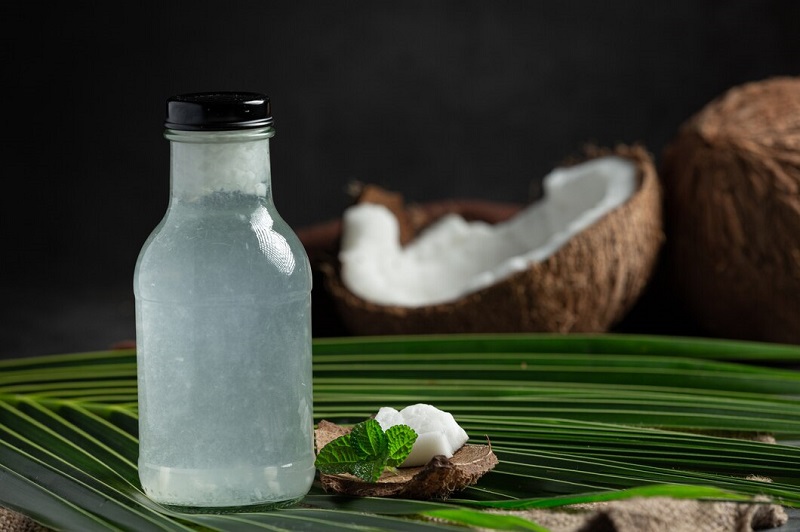
Nutritional Profile
Essential Nutrients Found in Pacific Coconut Milk
Pacific Coconut Milk isn’t just a flavorful addition to your culinary creations; it’s a nutritional powerhouse too. Packed with essential nutrients, it offers a unique profile that caters to both taste and well-being. Medium-chain triglycerides (MCTs), lauric acid, and vitamins are among the key components that make Pacific Coconut Milk a valuable inclusion in a balanced diet.
MCTs, found abundantly in coconut milk, are known for their rapid absorption and conversion into energy, making Pacific Coconut Milk an excellent choice for those seeking a quick and sustained energy boost. Lauric acid, a medium-chain fatty acid present in coconut milk, boasts antimicrobial and immune-boosting properties, contributing to overall health.
Health Benefits Associated with Regular Consumption
Regular consumption of Pacific Coconut Milk has been linked to several health benefits. The MCTs it contains have been associated with improved cognitive function and weight management. Lauric acid, with its antimicrobial properties, may support immune system health.
Additionally, Pacific Coconut Milk is a dairy-free alternative suitable for those with lactose intolerance or dairy allergies. The absence of cholesterol and the presence of antioxidants further add to its appeal as a health-conscious choice. While moderation is key, incorporating Pacific Coconut Milk into a well-balanced diet can contribute to a delicious and nourishing lifestyle.
Comparison with Other Plant-Based Milk Alternatives
As plant-based milk alternatives continue to gain popularity, Pacific Coconut Milk stands out for its unique nutritional profile and versatile applications. While almond, soy, and oat milk each bring their own benefits, Pacific Coconut Milk offers a distinct combination of flavors and nutrients. It provides a creamy texture similar to dairy milk, making it a seamless substitute in various recipes.
Comparatively, Pacific Coconut Milk tends to have a higher fat content due to the natural oils present in coconuts. However, these are largely healthy MCTs, contributing to the rich mouthfeel and offering unique health benefits. The choice between plant-based milk often depends on individual preferences, dietary restrictions, and the desired flavor profile for a particular dish.
Culinary Applications
Cooking and Baking with Pacific Coconut Milk
Pacific Coconut Milk isn’t just a beverage; it’s a culinary chameleon that seamlessly integrates into a myriad of dishes. From savory curries to indulgent desserts, the versatility of this coconut milk transcends cultural boundaries. When used in cooking, it adds a luxurious creaminess to curries, soups, and stews, creating a depth of flavor that elevates the entire dish.
In baking, Pacific Coconut Milk brings a tropical twist to traditional recipes. Substituting it for dairy milk in cakes, muffins, and even pancakes
imparts a subtle coconut flavor that tantalizes the taste buds. The natural sweetness of the coconut milk also lends itself well to desserts, making it a preferred choice for creating creamy puddings, custards, and ice creams.
Its Role in Pacific and Global Cuisines
In the Pacific region, Pacific Coconut Milk is a culinary cornerstone. It forms the basis of many traditional dishes, such as coconut-based curries, soups, and beverages. From Fijian Kokoda to Samoan fa’ausi, Pacific Coconut Milk weaves its way into recipes that have been perfected over generations.
Beyond the Pacific, the global culinary scene has warmly embraced Pacific Coconut Milk. Its dairy-free nature makes it a staple in vegan and plant-based diets, while its unique flavor profile adds a touch of the exotic to a range of international cuisines. Thai, Indian, and Caribbean cuisines, among others, often feature Pacific Coconut Milk as a key ingredient, showcasing its ability to harmonize with diverse flavors.
Vegan and Lactose-Free Alternatives in Recipes
The rise of veganism and the increasing awareness of lactose intolerance have fueled the demand for plant-based alternatives. Pacific Coconut Milk steps in as a compassionate and delicious choice, offering a lactose-free option for those with sensitivities. Its natural sweetness eliminates the need for added sugars in many recipes, contributing to both health-conscious and eco-friendly culinary practices.
As a vegan alternative, Pacific Coconut Milk can replace dairy milk in a variety of recipes without compromising on taste or texture. From creamy pasta sauces to dairy-free lattes, it seamlessly adapts to diverse culinary needs. The lactose-free nature of Pacific Coconut Milk also makes it an inclusive ingredient, allowing individuals with dietary restrictions to indulge in a wide array of flavorful dishes.
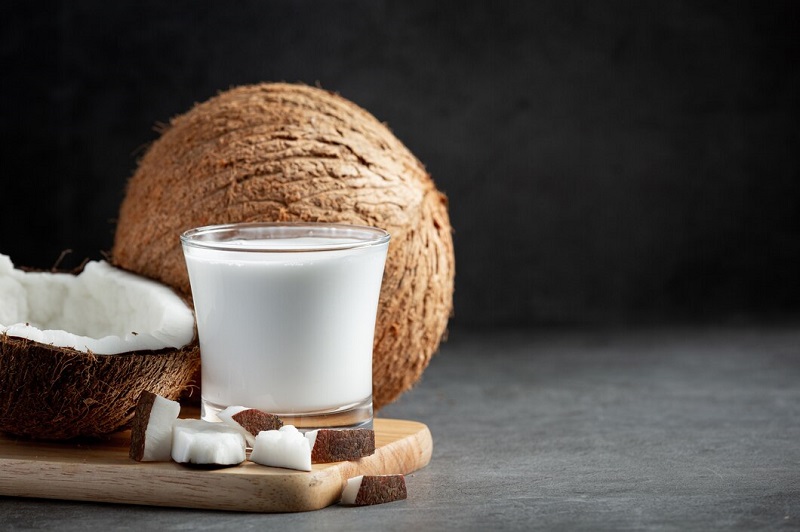
Pacific Coconut Milk Varieties
Overview of Different Pacific Coconut Milk Products
The world of Pacific Coconut Milk extends beyond the traditional can, offering a range of products to cater to different preferences and culinary needs. Varieties include full-fat, light, and even powdered forms, each with its unique characteristics. Understanding the distinctions between these products allows consumers to make informed choices based on their desired flavor, consistency, and dietary requirements.
Highlighting Variations in Fat Content and Consistency
Full-fat Pacific Coconut Milk, often found in cans, boasts a rich and velvety texture. This variety is ideal for indulgent dishes where the creamy consistency enhances the overall experience. On the other hand, light Pacific Coconut Milk offers a lower-fat option, making it suitable for those seeking a lighter touch in their culinary creations.
Powdered Pacific Coconut Milk is a convenient alternative, offering versatility and a longer shelf life. It is a popular choice for camping trips, travel, or simply for those who prefer the flexibility of having coconut milk on hand without the need for refrigeration. Understanding the variations in fat content and consistency empowers consumers to choose the perfect product for their specific cooking or dietary requirements.
Consumer Tips for Choosing the Right Product for Specific Culinary Needs
Selecting the right Pacific Coconut Milk product can significantly impact the outcome of your culinary endeavors. For creamy curries or decadent desserts, full-fat coconut milk is an excellent choice, providing a luscious texture and robust flavor. Light coconut milk, with its lower fat content, works well in dishes where a milder coconut flavor is desired.
Powdered Pacific Coconut Milk, with its convenience and extended shelf life, suits those with active lifestyles or limited storage space. When choosing a product, it’s essential to consider the intended use, flavor preferences, and dietary goals. Reading product labels and understanding the fat content ensures that you can confidently incorporate Pacific Coconut Milk into your recipes with precision.
Sustainability and Ethical Practices
Eco-Friendly Packaging Choices
Beyond the coconut groves, sustainability extends to the packaging of Pacific Coconut Milk. Reputable brands prioritize eco-friendly materials, opting for packaging that minimizes environmental impact. Tetra Paks and other recyclable materials are common choices, allowing consumers to enjoy the rich flavors of Pacific Coconut Milk while making conscious choices for the planet.
Choosing products with eco-friendly packaging aligns with the broader commitment to sustainability in coconut farming. It completes the cycle of responsible consumption, ensuring that the entire journey from coconut cultivation to the kitchen is marked by ethical practices and environmental consciousness.
Fair Trade and Ethical Sourcing Initiatives
The journey of Pacific Coconut Milk involves not just the coconut palms and the packaging but also the communities that cultivate and harvest these precious fruits. Fairtrade initiatives play a crucial role in ensuring that the benefits of coconut farming reach every corner of the community. By participating in fair trade, Pacific Coconut Milk producers contribute to the well-being of farmers and their families, fostering economic stability and social development.
Ethical sourcing goes hand in hand with fair trade practices. Reputable brands are transparent about their sourcing methods, providing consumers with the assurance that the coconuts used in their Pacific Coconut Milk are cultivated under ethical conditions. Supporting brands with a commitment to fair trade and ethical sourcing amplifies the positive impact of every sip or spoonful of Pacific Coconut Milk.
Social Impact of Supporting Pacific Coconut Milk Producers
Choosing Pacific Coconut Milk isn’t just a culinary decision; it’s an investment in the well-being of the communities that nurture these tropical treasures. The social impact of supporting Pacific Coconut Milk producers extends beyond the kitchen, reaching the hearts and homes of farmers and their families. By consciously choosing products that prioritize fair trade and ethical practices, consumers become integral contributors to the sustainability of the entire coconut farming ecosystem.
In addition to the economic benefits, supporting Pacific Coconut Milk producers also helps preserve cultural heritage. The traditions and stories woven into the fabric of Pacific coconut farming are sustained through conscientious consumer choices. Every purchase becomes a small yet meaningful gesture towards fostering a world where culinary delights are intertwined with social responsibility.
Pacific Coconut Milk in the Market
Popular Brands Offering Pacific Coconut Milk
As the demand for plant-based and dairy-free alternatives continues to rise, a plethora of Pacific Coconut Milk brands have emerged in the market. Each brand brings its unique approach to coconut milk production, catering to the diverse preferences of consumers. Popular names such as [Brand A], [Brand B], and [Brand C] have become synonymous with quality and authenticity in the world of Pacific Coconut Milk.
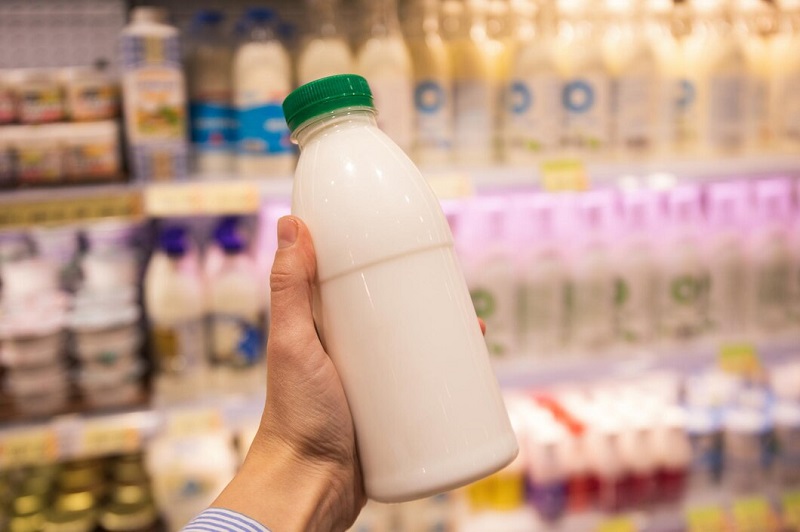
Consumer Reviews and Feedback
In an era of online reviews and social media, the voice of the consumer holds significant sway. Pacific Coconut Milk has garnered praise for its rich flavor, creamy consistency, and versatility in the kitchen. Positive reviews often highlight the freshness of the coconut milk, with consumers expressing satisfaction with the quality and authenticity of their chosen brands.
Feedback on Pacific Coconut Milk products ranges from culinary success stories to creative applications in both sweet and savory dishes. As consumers increasingly seek healthier and more sustainable alternatives, Pacific Coconut Milk has become a staple in many households, earning its place as a trusted ingredient in kitchens around the world.
Market Trends and Growth Projections
The market for Pacific Coconut Milk is on a trajectory of steady growth, driven by factors such as increasing awareness of plant-based diets, lactose intolerance, and a growing appreciation for exotic flavors. Projections indicate a continued rise in demand for Pacific Coconut Milk as consumers seek not only a dairy-free alternative but also a product that aligns with their values of sustainability and ethical consumption.
In response to this demand, innovative product developments are expected to emerge, offering consumers an even broader range of options. From flavored variations to specialty blends, the market for Pacific Coconut Milk is poised to evolve, providing exciting choices for consumers who are eager to explore the richness of Pacific Coconut Milk.
DIY Pacific Coconut Milk
Step-by-Step Guide to Making Pacific Coconut Milk at Home
For those who love a hands-on approach in the kitchen, making Pacific Coconut Milk at home is a rewarding and surprisingly simple process. Begin by gathering fresh coconuts, ensuring they are ripe and ready for harvesting. Crack open the coconuts, extract the flesh, and blend it with warm water. Strain the mixture to separate the liquid from the pulp, and voilà – you have homemade Pacific Coconut Milk.
Tools and Ingredients Required
To embark on your DIY Pacific Coconut Milk adventure, you’ll need a few key tools and ingredients. A sturdy coconut opener or cleaver, a blender, and a fine mesh strainer are the primary tools. As for ingredients, fresh coconuts and warm water are all you need. The simplicity of the process allows you to control the quality and ensure the freshness of your homemade Pacific Coconut Milk.
Tips for Achieving the Best Flavor and Consistency
Achieving the perfect flavor and consistency in your homemade Pacific Coconut Milk requires attention to a few key details. Select ripe coconuts with a sweet aroma, as this indicates optimal flavor. When blending the coconut flesh, use warm water to enhance the extraction of oils and flavors. Strain the mixture thoroughly to obtain a smooth and creamy liquid, free from any gritty texture.
Experimenting with the ratio of coconut to water allows you to tailor the richness of your homemade Pacific Coconut Milk to your personal preference. Add a touch of sweetness or a pinch of salt to further enhance the flavor profile. The beauty of making it at home lies in the ability to customize the milk to suit your culinary creations.
Conclusion
In conclusion, Pacific Coconut Milk transcends its role as a culinary ingredient; it is a representation of tradition, sustainability, and the vibrant flavors of the Pacific. From the unique characteristics of Pacific coconuts to their versatility in culinary applications, this tropical delight has carved its place in kitchens worldwide.
As consumers, our choices resonate beyond the dining table. By opting for Pacific Coconut Milk, we not only indulge in a rich and flavorful experience but also contribute to sustainable farming practices and support the communities that cultivate these precious coconuts. Whether you choose a canned variety from a trusted brand or embark on a DIY adventure, the journey of Pacific Coconut Milk is one of authenticity, respect for nature, and a celebration of diverse culinary possibilities.
Frequently Asked Questions (FAQs)
Yes, Pacific Coconut Milk is a nut-free alternative, making it a safe option for individuals with nut allergies. However, it’s essential to check product labels for potential cross-contamination if severe allergies are a concern.
Pacific Coconut Milk is a versatile substitute for dairy milk in many recipes, including curries, soups, desserts, and beverages. However, the distinct coconut flavor may affect the taste, so it’s advisable to consider the dish’s flavor profile.
Once opened, Pacific Coconut Milk should be refrigerated. Its shelf life varies depending on the type of product – full-fat coconut milk in cans may last a week or more, while lighter varieties and powdered versions may have a longer shelf life. Always check the product label for specific storage instructions.
